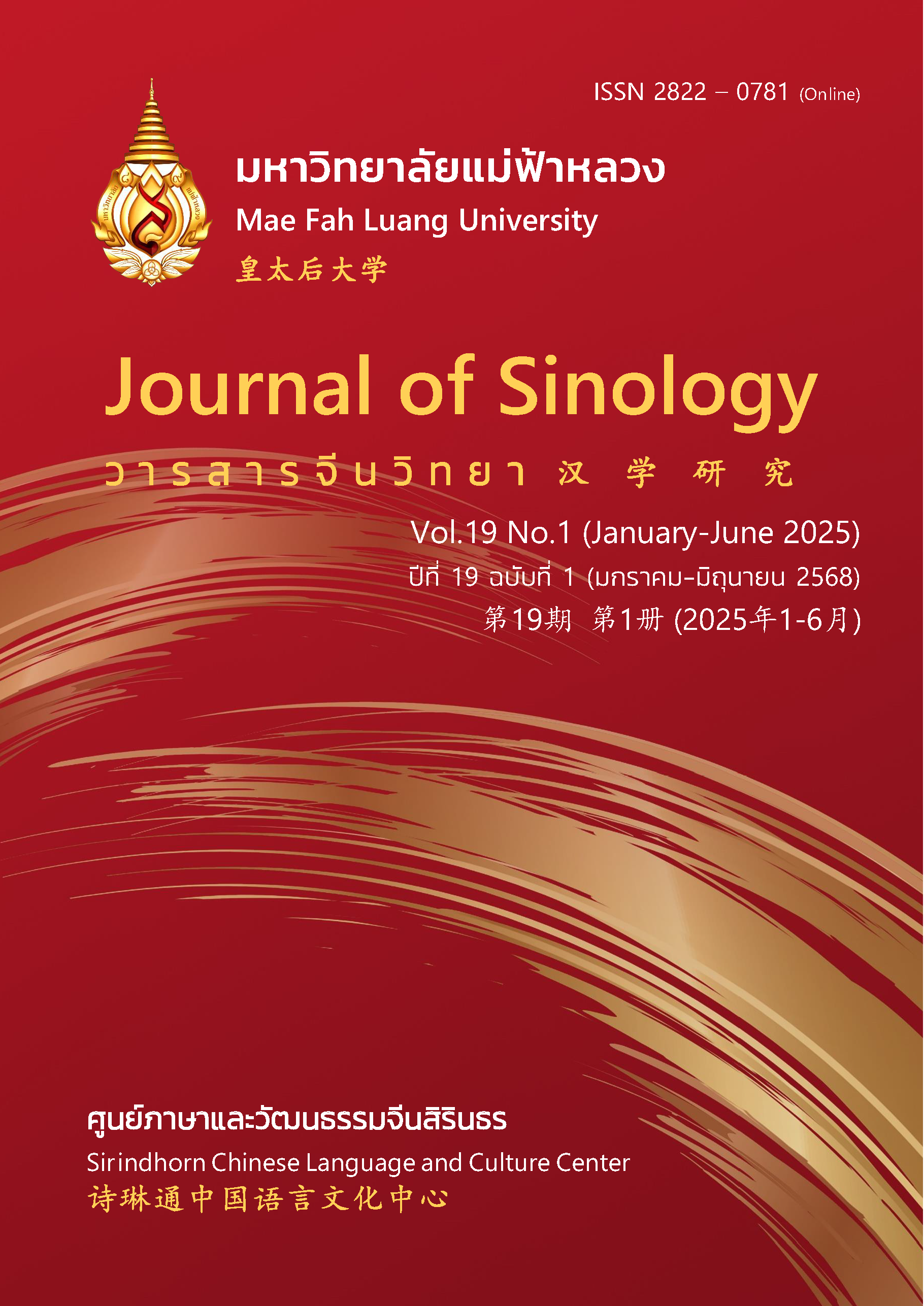A Comparative Analysis of the Corresponding Characteristics between Chinese “地” Structure and Thai Serial Verb Construction
Keywords:
“地de”, Serial Verb Construction, Chinese-Thai comparative, Adverbial ComparisonAbstract
The Thai serial verb construction is a parallel structure to the Chinese “地” construction. According to the collected data, the adverbial clause following “地” can function as either the first or second predicate in the Thai serial verb construction. The use of the serial verb construction in this correspondence can be either optional or obligatory. This structure differs from the more common pattern of a verb followed by an adverbial clause. Whether the Thai serial verb construction can correspond to the “地” construction depends on several factors, such as the type of word or phrase functioning as the adverbial, the use of adverbial markers, the principle of temporal sequence, and adverbial semantic orientation.
References
Amkid, S. (2024). A study of Thai sentences compared to the Chinese “Adverbial Modifier + 地de + Verb” construction using inventory typology. Journal of Languages and Linguistics, 42(2), 56-87. (In Thai)
Chuvicha, Y. (1993). Clausehood in serial verb constructions in Thai [Unpublished doctoral dissertation]. Chulalongkorn University. (In Thai)
Dai, H.Y. (1988). Temporal sequence and Chinese word order. Huang, H. (translate). Linguistics Abroad, (1), 10-20. (In Chinese)
Deng, Sh.W. (2011). A comparative study of adjectives and adverbials in Chinese and Thai languages [Unpublished master’s thesis]. Huaqiao University. (In Chinese)
Deng, T.T. (2012). Chinese and Thai language structural particle contrast [Unpublished master’s thesis]. Guangxi Minzu University. (In Chinese)
Liu, Y.H. (1983). Classification of adverbials and order of multiple adverbials. Grammar Research and Exploration, (1), 32-56. (In Chinese)
Prasithrathsint, A. (2006). Controversial construction in Thai grammar. Chulalongkorn University Press. (In Thai)
Suwanarat, P., & Mallikamas, P. (2020). A study of conveying Thai serial verb constructions into English: Case study of the sweet scent of Hay. Journal of Letters, 49(2), 67 – 97. (In Thai)
Wang, S.H. (2008). A comparative study of the word order of attributes and adverbials in Chinese and Thai languages [Unpublished master’s thesis]. Xiamen University. (In Chinese)
Wei, Y.J. (2023). An Analysis of Equivalence of Thai Adverbial Markers and the Chinese Word “de地” from Three Linguistic Aspects: A Case of 21 Modern Chinese Novels and Their Corresponding Thai Translations. In N. Meechiyo (Eds.), Chinese Studies Book Chapter 2 (48 Years Thai - Chinese Relations: Society, Culture, and Education Strategic Partnership), (pp.1-22).Sirindhorn Chinese Language and Culture Center. (In Chinese)
Yin, Zh.L. (2011). Comparative study of Adverbial Word Order in Chinese and Thai and Analysis of Errors in Thai Students' Acquisition of Adverbials [Unpublished master’s thesis]. Xian International Studies University. (In Chinese)



